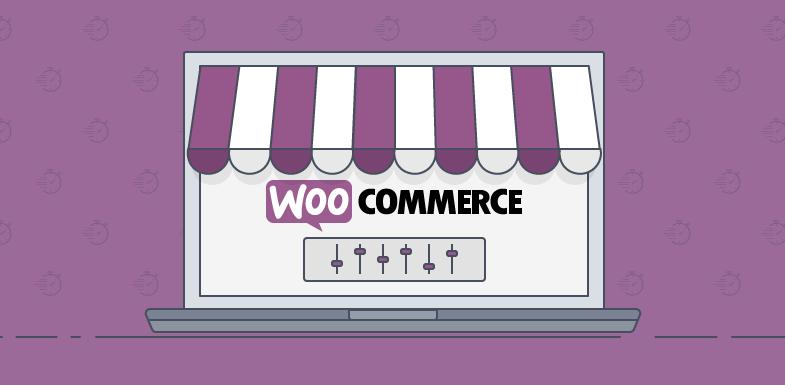
Shopify is a very popular platform for online shopping. It makes it easy for beginners to create an online store because you don’t need to know how to code. This means that anyone who wants to start selling online can do so without much experience.
However, there’s a problem.
You shouldn’t think of Shopify as your only choice. While it seems like the usual way to set up an online store, there are many other options out there.
Top 10 Shopify Alternatives
1. Sellfy
It is a very easy-to-use online store platform. Setting it up is simpler than with Shopify, making it stand out among other options.

It was made mainly for selling digital products, so it’s the best choice for that. However, it also works well for selling physical products and subscriptions. You can set up your online store in less than 5 minutes!
A great feature of Sellfy is its built-in print-on-demand service. This means you can create and sell custom items like clothing, home decor, and accessories without needing extra tools.
It has many helpful features, including:
- Email marketing tools with unlimited templates and subscribers
- Discounts with timers to create urgency
- Subscription options for digital products
- A “pay what you want” feature
You can also easily add “buy now” buttons or your whole store to your website with just a few clicks.
Ising this is is smooth and easy. However, it has some limits, like fewer options for customizing your store. While you can sell all kinds of products, it’s best for digital ones.
Pricing: Sellfy offers three plans, each with more advanced features.
Pros:
- Includes online store hosting
- Very simple and organized interface
- Built-in print-on-demand service
- Supports digital, physical, and subscription products
- Built-in email marketing tools
- Option to embed “buy now” buttons
- Unlimited product listings
- Mobile app available
- Quick and easy checkout
Cons:
- Limited integrations with other apps
- Fewer options for customizing your store
- Limited app integrations
2. Prestashop
PrestaShop is a free tool that helps you create your own online store. It’s open-source, which means you can download it for free and change it however you like.

Why Choose?
If you want your store to look special and different from others, PrestaShop is a great choice. It lets you personalize your shop, which is important for standing out in a busy online market.
Important Things to Know:
Hosting Needed: You need to find your own place on the internet (hosting) to store your online shop.
Technical Skills Required: You should know some coding to set it up. If you don’t, you’ll need to hire someone who does. Also, you might need help later for any technical issues.
Cost: It is completely free to use. They don’t take any money from your sales!
Pros:
- No coding skills are needed to use the templates.
- It’s a free platform.
- You can customize it a lot.
- There are over 1,500 templates to choose from.
- There’s a big community for support.
- You can add as many products as you want.
- It has built-in tools for marketing.
- It supports many languages and currencies.
Cons:
- Setting it up can be difficult.
- You’ll have to pay for customer support (starting at $250 for three hours).
- You need to know some coding skills.
- It doesn’t have as many features as some other platforms.
- The designs might not look very professional for larger stores.
- There might be transaction fees.
It is a good option if you want to create a unique online store but be prepared for some challenges!
3. BigCommerce
BigCommerce is a popular choice for people looking for an alternative to Shopify. It lets you create an online store easily, even if you don’t know how to code. It’s good for beginners and can handle large online shops.

Compared to Shopify, BigCommerce has better tools for marketing your products, helping you get more sales. It also includes many features that reduce the need to buy extra apps, saving you money.
However, BigCommerce only provides seven free themes for customizing your store, so if you want more options, you’ll have to buy premium themes.
When you join BigCommerce, you can get help by phone, live chat, email, or forum. But many users say the phone and live chat support aren’t very helpful.
BigCommerce might not be the best choice if you want to sell digital products with PayPal because of its limitations and the time it takes to set up.
Price: Plans start at $29.95 per month and can go up to $299.95 per month, which can be quite expensive.
Pros:
- No coding needed
- Good tools for managing your store
- Built-in tools for SEO and marketing
- No transaction fees
- Unlimited staff accounts on any plan
- Built-in product review feature
Cons:
- Expensive themes to buy
- Hard to manage VAT MOSS rates for digital sales
- Limit on annual sales
- Most store themes look similar
4. Shift4Shop (formerly 3Dcart)
Shift4Shop, formerly called 3dcart, is an online store platform like Shopify. It allows you to build and start your own online store easily. U.S. citizens can use a free plan, but it only works with Shift4’s payment system.

With paid plans, you can connect to over 300 different payment options and get features like real-time shipping. Shift4Shop has a strong inventory system and helpful tools for search engine optimization (SEO), which can help your store show up better on search engines. It is also cheaper than Shopify, offering more features in its basic plan.
However, creating a store on Shift4Shop can be challenging. There’s no easy drag-and-drop feature, which may make it hard for beginners. The product pages can seem complicated, and you might need help with technical issues. Some users have found that customer support isn’t very good.
Price
- Free plan available (limited to Shift4 payment gateway)
- Paid plans from $299/month
Pros
- No coding required
- Free and three paid plans
- No transaction fees
- Over 300 payment options
- Good for experienced users
- Built-in marketing tools
- Ability to create discount codes
Cons
- Difficult interface for beginners
- No support for multiple languages
- Concerns about payment gateway reliability
- Free templates look basic
- Poor customer service
- Steep learning curve for new users
- Revenue limits on paid plans
5. WooCommerce
When you want to create an online store, you might hear a lot about two popular options: WooCommerce and Shopify. Choosing between them can be tough, so let’s look at what makes them different.

It is a tool you add to WordPress to make an online store. This means you can build your store however you want, but you need to know a bit about how websites work, like hosting and domain names.
Pros:
- You can customize your store a lot. Since it’s open source, many extra tools (plugins) are available to improve your store.
- Many people use WooCommerce, so you can find help easily.
- The WooCommerce plugin and WordPress are free.
Cons:
- It can be tricky to set up, especially if you’re not familiar with WordPress.
- You have to handle all the technical stuff to keep your site safe.
- \While WooCommerce is free, you may need to pay for things like hosting and extra tools, which can add up.
- It’s harder for someone new to websites to use.
It gives you lots of freedom to create your store, but it can be complicated, especially if you’re not tech-savvy.
6. Ecwid

There are two main types of platforms for creating online stores:
- Web-hosted solutions: These let you build a complete online store on their website.
- Self-hosted solutions: These give you more freedom to design your store but need some technical knowledge.
It is different, it’s a mix of both. It helps you turn a regular website into an online shop.
If you’ve ever tried to move an online store to a website, you know it can be hard. This can make this easier.
It is different from other platforms like Shopify because it’s designed for business owners who want an easy way to add online shopping to their website.
Pricing: It offers a free plan and three paid plans with more features.
Pros:
- Works well with social media
- Easy to add to your existing website
- Matches your website’s design
- Can translate into more than 51 languages automatically
- Has a free plan
- Offers good support (phone, chat, and email)
- No extra fees on sales
Cons:
- The visual editor has limited options
- The free plan only lets you sell 10 products
- The free plan doesn’t allow SEO editing
- You can’t change product URLs for better SEO
- You can’t create a full online store with just Ecwid
- You need an app to add the shopping cart to your site
7. BigCartel
It is an online platform designed especially for artists who want to sell their art. It is different from other eCommerce sites because it focuses on making it easy for artists to set up their stores.

- User-Friendly: It’s simple to use and set up. You don’t need to know how to code.
- Free Plan: You can start selling for free, but you can only sell up to five products.
- Affordable Options: If you need more features, you can choose a paid plan, which is not very expensive, with the highest one costing $29.99.
- Good for Small Businesses: It’s great for small artists or businesses who just want to sell a few items.
Pros:
- Easy to use with no coding needed.
- You can start for free.
- The most expensive plan is only $29.99.
- No extra fees when you sell.
Cons:
- Not suitable for bigger stores.
- Limited features.
- Few design options.
- You can’t manage inventory on the free plan.
- Customer support is not very strong.
- If you want to sell digital products, you need an extra add-on.
8. Magento
If you need a strong online store, Magento could be a good choice. Many big and growing companies use Magento because it has lots of features for running an online business, like tools for marketing and understanding customers.

You can add many different features to your store, which is why it’s popular with large businesses.
However, setting up Magento can be complicated. If you’re not a web developer, you’ll likely need to hire someone to help you. This is why big companies like it, they can afford to pay for web design help.
It is mostly made for larger businesses and isn’t the best fit for small businesses with limited budgets.
Price:
Magento is free to use, but there are many extra costs involved.
Pros:
- Very flexible with lots of features.
- Many marketing tools available.
- A large community of users for support.
- Free to start.
- Good for managing inventory.
Cons:
- You need web development skills to set it up.
- Not very simple to use.
- Requires extra costs for hosting, themes, and add-ons.
- Doesn’t include payment processing or live tech support.
- No built-in email marketing features.
9. Wix Stores
When you compare Wix Stores to other online store services like Shopify, the main difference is that Wix is mainly for building websites, not just online shops.

It is designed for people who have never made a website before. It has easy tools to drag and drop things to create a site and offers over 500 templates to choose from. However, since it wasn’t made just for online stores, it’s not as easy to compare it with platforms that focus only on eCommerce.
Even though Wix has an eCommerce plan, it doesn’t have all the same features or control as dedicated eCommerce platforms.
Price: The Wix eCommerce plan costs $17 per month and includes a free domain for a year, some marketing vouchers, two premium add-ons for free, and 20GB of storage.
Pros:
- Lots of extra features that aren’t just for online stores.
- Easy to use.
- Good price.
- Modern templates.
- Allows for advanced customizations.
- Has a mobile app.
Cons:
- Not enough features for bigger stores.
- Can’t sell on multiple platforms.
- Many features require expensive third-party apps.
- Limited options for selling digital products.
10. Squarespace
Squarespace is a software that helps you build websites easily. It started as a website builder for people who want their pages to look unique and stylish, unlike Wix, which is more for general use.

They made a platform called Squarespace that is simple to use and has many good features. It’s known for having beautiful designs, with over 80 high-quality templates you can change to fit your style. If you want a website that looks more like a work of art, Squarespace is a great choice.
Like Wix, Squarespace lets you drag and drop elements to create your website quickly. However, its tools for selling products online are not as advanced as those from other website builders. Some people find Squarespace a bit tricky to use because its dashboard isn’t very clear, and the editor can be hard to navigate.
Pricing: The basic plan costs $26 per month.
Pros
- No need to know coding
- Free domain name with the annual plan
- You can sell unlimited products
- Good customer support
- Lots of stylish design options
Cons
- Hard to navigate
- No built-in marketing tools
- Limited third-party apps
- Few payment options
- No add-on marketplace







